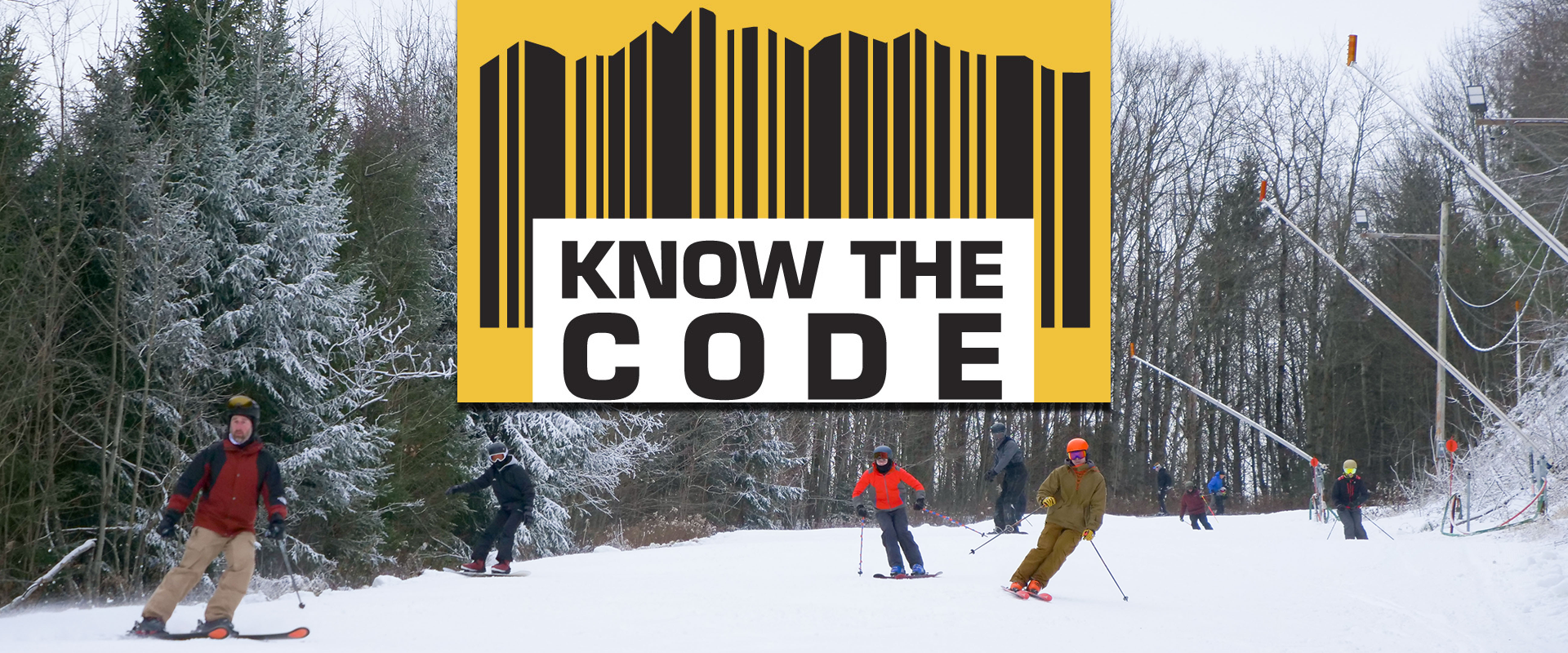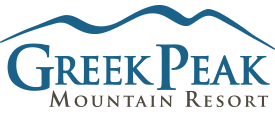
Skiing for Beginners: Knowing the Code: Ski Etiquette & Safety
At Greek Peak, we want everyone to have a safe and enjoyable experience on the mountain. That’s why there’s a set of guidelines known as the Skier’s Responsibility Code. It’s not just about following the rules—it’s about understanding how to stay safe, respect others on the slopes, and ensure that everyone can have fun while skiing or snowboarding.
The Code covers important topics like staying in control, yielding to others, and knowing where to stop safely. By following these simple guidelines, you’ll help create a positive environment for yourself and your fellow skiers.
Mountain Safety: The Skier’s Responsibility Code
Safety on the slopes is a shared responsibility. The Skier’s Responsibility Code is a set of rules that every skier and snowboarder should know to ensure a safe and fun experience for everyone.
Stay in Control: Always stay in control and be able to stop or avoid other people or objects. Knowing how to turn and stop is key to staying safe.
People Ahead of You Have the Right of Way: It’s your responsibility to avoid others ahead of you. Skiers and snowboarders in front have the right of way, so always be aware of your surroundings.
Stop in a Safe Place: Only stop where you are visible to others and where you won’t obstruct a trail. If you need to rest, pull over to the side of the trail.
Observe Signs and Warnings: Follow posted signs, warnings, and hazard markings. They’re there to keep you safe and to guide you to the appropriate trails for your skill level.
Use Lifts Safely: Know how to load, ride, and unload the ski lifts safely. Follow the instructions of lift attendants and be mindful of those around you when entering and exiting the lift.
Safety Gear: Essential for Every Skier and Snowboarder
Wearing the right safety gear is just as important as knowing the rules. It protects you and others while you enjoy your time on the mountain.
Helmet: A helmet is a must-have for everyone on the slopes. It protects you in case of falls or collisions and helps keep you warm. Make sure your helmet fits properly and is designed for skiing or snowboarding.
Goggles: Goggles protect your eyes from snow, wind, and harmful UV rays. They also improve visibility in different weather conditions. Choose goggles with anti-fog lenses for a clear view.
Wrist Guards (for Snowboarders): Wrist guards can prevent common wrist injuries for snowboarders, especially beginners. They fit under gloves and offer extra support during falls.
Proper Clothing: Wearing the right clothing not only keeps you warm but also adds an extra layer of protection against scrapes and bruises.
Slope Etiquette: Good Manners on the Mountain
Being mindful of others on the slopes ensures that everyone has a great time. Here’s how to practice good slope etiquette.
Yield When Merging: When merging onto a trail or entering a slope, look uphill and yield to others. Entering a trail slowly helps you merge safely.
Use Polite Language: If you need to pass someone, give a friendly ‘On your left!’ to let them know you’re coming. It’s a simple way to avoid surprises and ensure smooth navigation.
Wait Your Turn: Whether it’s at the lift line or a trail junction, wait your turn and be patient. This helps maintain a steady flow and prevents accidents.
Respect the Environment: Stick to marked trails and avoid skiing in restricted areas to protect the mountain’s natural habitat. Carry out any trash to keep the slopes clean for everyone.
Pro Tips & Common Mistakes

Pro Tip #1: Warm-Up Before You Ski: A few minutes of stretching and warming up your muscles can help prevent injuries and make your day on the slopes more enjoyable.
Pro Tip #2: Stay Hydrated and Take Breaks: Skiing is a physically demanding sport. Drink water throughout the day and take breaks to avoid fatigue.

Common Mistake: Ignoring Signs and Barriers: Some areas are off-limits for good reasons, such as avalanche risks or hazardous terrain. Ignoring these warnings can be dangerous.
Common Mistake: Skiing Beyond Your Ability: It’s tempting to try steeper trails, but pushing beyond your skill level can lead to accidents. Progress at your own pace and build confidence on easier slopes.
